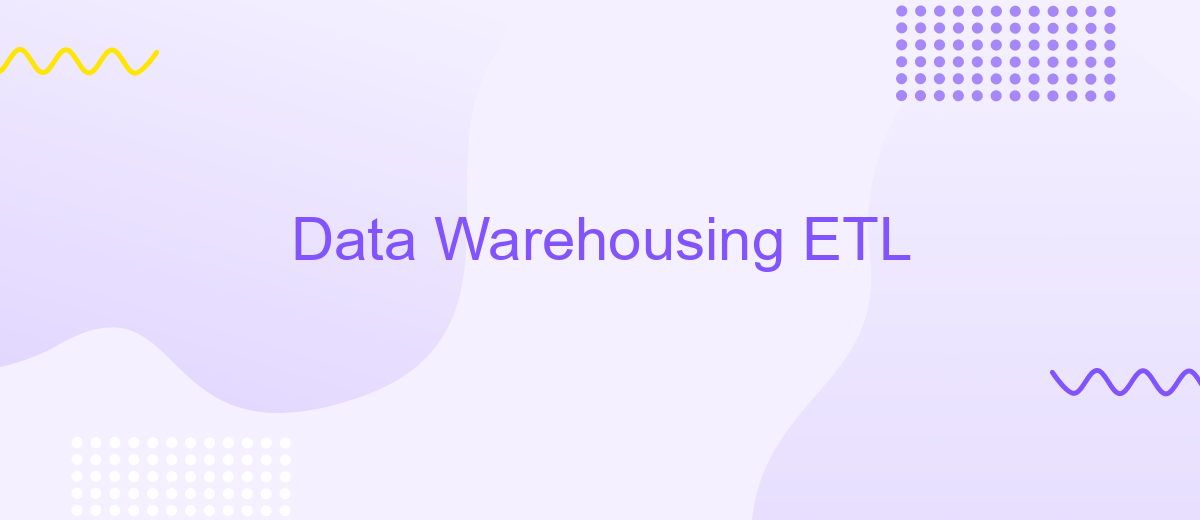Data Warehousing ETL
Data Warehousing ETL (Extract, Transform, Load) is a critical process in managing and utilizing large volumes of data. It involves extracting data from various sources, transforming it into a suitable format, and loading it into a data warehouse. This process ensures that organizations have clean, consistent, and accessible data for analysis, reporting, and decision-making.
Data Warehousing ETL Process
The Data Warehousing ETL process involves extracting data from various sources, transforming it into a suitable format, and loading it into a data warehouse. This process ensures that data is clean, consistent, and ready for analysis.
- Extraction: Data is collected from multiple sources such as databases, APIs, and flat files.
- Transformation: The extracted data is then cleaned, normalized, and converted into a suitable format for analysis.
- Loading: Finally, the transformed data is loaded into the data warehouse for storage and future use.
Tools like ApiX-Drive can simplify the ETL process by providing seamless integration capabilities. ApiX-Drive allows for easy connection to various data sources and automates the data extraction and loading phases, ensuring that the data warehouse is always up-to-date and reliable.
ETL Architecture

The architecture of ETL (Extract, Transform, Load) is a critical component in data warehousing, designed to efficiently manage the flow of data from various sources into a centralized repository. The ETL process begins with the extraction phase, where data is collected from disparate sources, including databases, cloud services, and flat files. This data is then transformed to meet the specific requirements of the target data warehouse, involving tasks such as data cleansing, normalization, and enrichment. Finally, the transformed data is loaded into the data warehouse, ensuring it is structured and optimized for querying and analysis.
Modern ETL architectures often leverage integration services like ApiX-Drive to streamline and automate the data integration process. ApiX-Drive offers a user-friendly platform that allows seamless connections between various data sources and destinations, reducing the complexity and time required for manual integrations. By utilizing such services, organizations can enhance the efficiency and reliability of their ETL processes, ensuring real-time data availability and improved decision-making capabilities. This integration capability is particularly beneficial for businesses looking to scale their data operations without the need for extensive technical resources.
ETL Tools and Technologies

ETL (Extract, Transform, Load) tools and technologies are essential for the efficient management and processing of large volumes of data in data warehousing. These tools help in extracting data from various sources, transforming it into a suitable format, and loading it into a data warehouse for analysis and reporting.
- Informatica PowerCenter: A widely used ETL tool known for its high performance and scalability.
- Talend: An open-source ETL tool that offers extensive data integration capabilities.
- Apache Nifi: A powerful data integration tool that supports real-time data flow automation.
- ApiX-Drive: A cloud-based service that simplifies the integration of various applications and automates data workflows without the need for coding.
- Microsoft SQL Server Integration Services (SSIS): A comprehensive ETL tool that integrates seamlessly with other Microsoft products.
Choosing the right ETL tool depends on various factors such as the volume of data, complexity of transformations, and specific business requirements. Tools like ApiX-Drive are particularly useful for businesses looking to streamline their data integration processes without extensive technical expertise. By leveraging these technologies, organizations can ensure their data is accurate, timely, and ready for analysis.
ETL Best Practices

Effective ETL (Extract, Transform, Load) processes are crucial for maintaining data integrity and performance in data warehousing. One of the key best practices is to ensure data quality at each stage of the ETL process. This involves validating data during extraction, applying necessary transformations, and conducting thorough data quality checks before loading.
Another important practice is to implement robust error handling and logging mechanisms. This helps in quickly identifying and resolving issues that may arise during the ETL process. Additionally, it is advisable to use incremental data loading techniques to optimize performance and reduce the load on the data warehouse.
- Automate ETL workflows to minimize manual intervention and reduce errors.
- Regularly monitor and audit ETL processes to ensure they are running efficiently.
- Utilize scalable and flexible integration tools such as ApiX-Drive for seamless data integration.
- Ensure proper documentation and version control for all ETL scripts and processes.
By adhering to these best practices, organizations can significantly improve the reliability and efficiency of their ETL processes. Leveraging tools like ApiX-Drive can further streamline data integration, making it easier to manage and maintain data workflows.


ETL Challenges and Future Trends
ETL processes face several challenges, including data quality issues, scalability concerns, and the complexity of integrating diverse data sources. Ensuring data accuracy and consistency is critical, yet often difficult due to the heterogeneity of data formats and sources. Scalability is another significant challenge, as the volume of data grows exponentially, requiring robust infrastructure to handle large-scale ETL operations efficiently. Additionally, integrating disparate data sources can be complex, often necessitating custom solutions and significant manual effort.
Looking towards the future, trends such as automation and AI-driven ETL are gaining traction. Tools like ApiX-Drive are simplifying the integration process by offering automated workflows and seamless data transfer between applications, reducing the need for manual intervention. Moreover, cloud-based ETL solutions are becoming more prevalent, providing scalable and flexible options for handling large data sets. As businesses continue to prioritize data-driven decision-making, the evolution of ETL processes will likely focus on enhancing efficiency, reducing complexity, and ensuring high data quality.
FAQ
What is ETL in the context of Data Warehousing?
Why is ETL important for Data Warehousing?
What are the common challenges faced during the ETL process?
How can automation improve the ETL process?
What are some best practices for ETL in Data Warehousing?
Routine tasks take a lot of time from employees? Do they burn out, do not have enough working day for the main duties and important things? Do you understand that the only way out of this situation in modern realities is automation? Try Apix-Drive for free and make sure that the online connector in 5 minutes of setting up integration will remove a significant part of the routine from your life and free up time for you and your employees.

